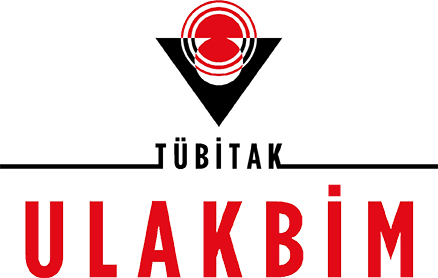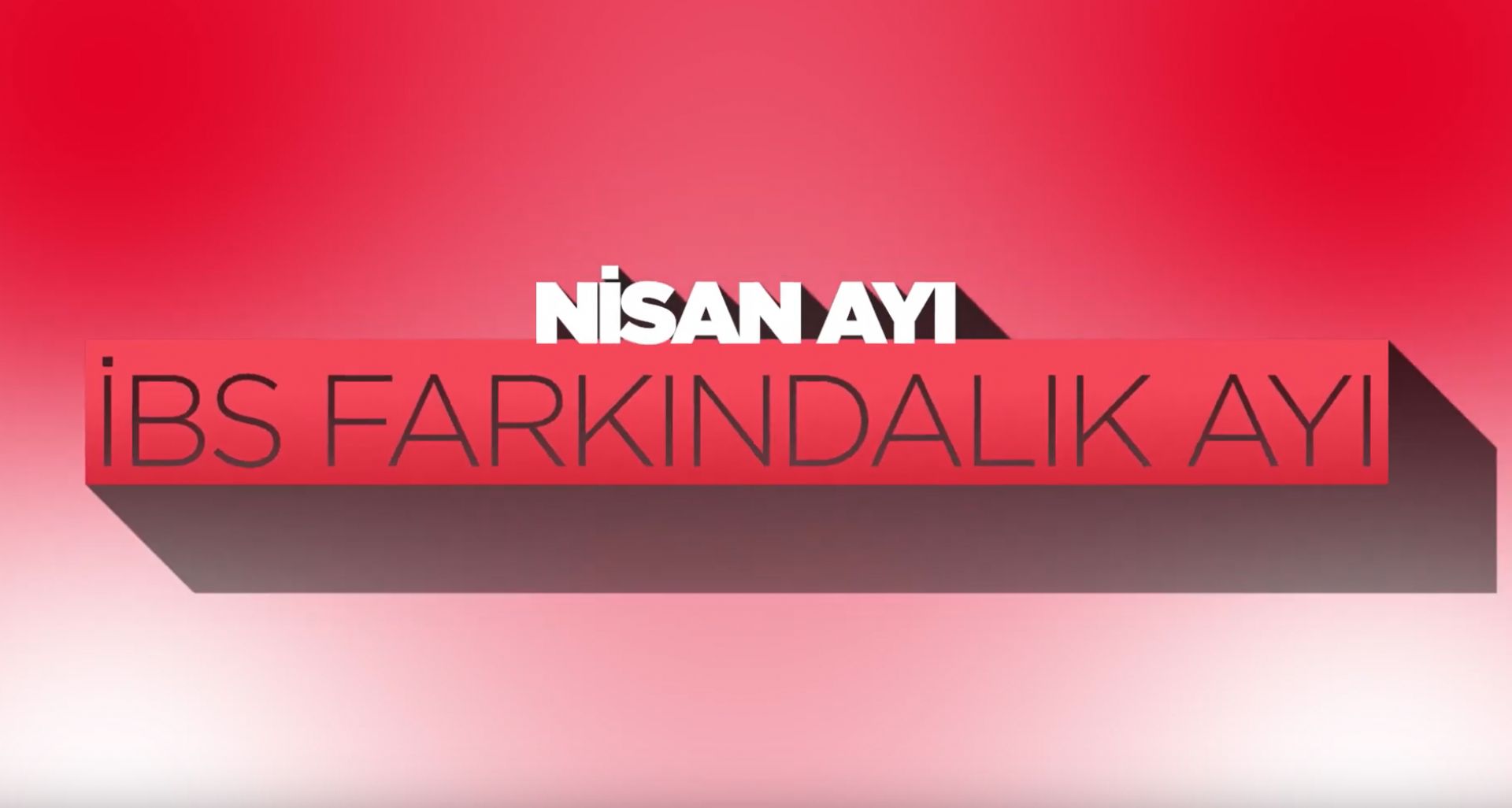Ağustos 2011
- Ana Sayfa
- Sayılar
- Ağustos 2011
- Endoskopi öncesi anksiyete derecesinin hasta toleransı ve sedatif dozu üzerine etkisi
Ağustos 2011 / (19 - 2)
Endoskopi öncesi anksiyete derecesinin hasta toleransı ve sedatif dozu üzerine etkisi
Sayfa Numaraları
47-51
Yazarlar
Hakan Ümit ÜNAL1, Murat KORKMAZ1, Gamze ÖZÜÇÜRÜMEZ2, Seniz SARITAŞ3, Haldun SELÇUK1, Hülya GÖNEN4,
Uğur YILMAZ5
Kurumlar
Departments of 1Gastroenterology, 2Psychiatry, 3Internal Medicine and 4Anesthesiology, Başkent University School of Medicine, Ankara
Özet
Giriş ve Amaç: Üst gastrointestinal system endoskopisi hastalarda orta düzeyde anksiyete gelişimine neden olamaktadır. Ankiyete düzeyinin yüksek
olması hastanın işleme toleransını etkileyebilmekte ve bunun sonucu olarak
endoskopi işlemi ve sedasyona bağlı komplikasyon riskini arttırabilmektedir.
Bizim amacımız, anksiyete derecesinin hasta toleransı ve uygulanan sedatif
dozuna etkisini araştırmaktı. Aynı zamanda, endoskopi işlemi öncesi anksiyete derecesi ve işlem toleransını etkileyen hastaya ait faktörleri de değerlendirdik. Gereç ve Yöntem: Üst gastrointestinal sistem endoskopisi yapılmak
üzere refere edilen 18 yaş üstü hastalar çalışmaya alındı. Endoskopi işlemi
anksiyete derecesi Beck anksiyete ölçeği ile değerlendirildi. Bulgular: Toplam 233 hasta çalışmaya alındı. Hastaların 153?ü kadın olup ortalama yaş 45
idi. Otuz hastada endoskopi öncesi yüksek anksiyete düzeyleri saptanırken,
60 hastanın işlem toleransı kötü idi. Tolerans gruplarının anksiyete skorları
arasındaki fark istatistiksel olarak anlamlı değil idi. Sonuç: Bizim bulgularımıza göre endoskopi öncesi anksiyete derecesi işleme tolerans düzeyini etkilememektedir. ?şlemi kötü tolere eden grup yaş ortalaması diğer gruplara göre daha düşük olup, işlem öncesi anksiyete düzeyi kadınlarda erkeklere göre
daha yüksektir.
Anahtar Kelimeler
Endoskopi, anksiyete, tolerans, sedasyon
Giriş
Possible factors that could lead to a patient?s anxiety before
upper gastrointestinal (GI) endoscopy procedure are fear of
injury and choking, discomfort and unexpected diagnoses
such as cancer (1-3). Pre-procedure anxiety and fear of feeling discomfort and pain can act in concert and aggravate the
effect of each factor separately and finally lead to intolerance
of the endoscopic procedure (4). Intolerance of endoscopy
results in poor quality, lengthening of the procedure time and
use of more sedatives. Upper GI endoscopy is an invasive but
safe procedure. The complication rate is approximately 0.1%
and nearly half of them are related to the cardiopulmonary
system. Most of the cardiopulmonary complications result
from expected or adverse effects of sedative drugs (5-8).
Thus, pre-procedure anxiety is an important factor that forces
the use of high amounts of sedatives and as a result induces
cardiopulmonary complications.
We aimed to investigate the effect of pre-endoscopy anxiety
on tolerance of the endoscopy procedure and the amount of
sedative drug doses. We also investigated the possible patient
characteristics that affect the level of anxiety and tolerance of
the endoscopy procedure.
Olgu
Upper GI endoscopy produces moderate levels of anxiety in
patients (10). As patients feel more anxiety, their tolerability
of the endoscopy procedure decreases, which results in a poor- quality endoscopy. In order to overcome this problem,
different psychological methods have been tried, such as
hypnosis, relaxation music and permitting a friend or relative
of the patient to be present in the endoscopy room (11). However, none of these has been found as useful as sedative
drugs. As a result, the use of sedatives during endoscopy has
become widespread.
Upper GI endoscopy is an invasive but safe procedure, with a
reported complication rate of 0.1%, and more than half of the
complications are related to the use of sedatives instead of to
the endoscopy procedure itself (1-4). Previous published studies have reported that over- and under use of sedatives because of the unawareness of the anxiety level of the patient results in more complications and poor quality of the endoscopy (12-15). We designed our study to highlight this topic.
We observed that poor tolerance of the endoscopy procedure
results in the use of propofol. This finding was also compatible with the fact that both the doctors? and nurses? judgements
about patient tolerance of endoscopy were similar.
Lee et al. (16) reported that anxiety level is an independent
factor for sedation level and tolerance of endoscopy and that
patients with high anxiety levels experienced more pain and
difficulty in reaching the ideal sedation level. However, we
did not find a difference with respect to tolerance of endoscopy between patients with different anxiety levels. We think
that we achieved a desirable level of sedation in all patients
either with midazolam or with additional doses of propofol,
such that tolerance of the procedure was satisfactory in all patients irrespective of their anxiety level.
Previous articles have stated that female patients had higher
levels of pre-procedural anxiety and poor tolerance of endoscopy (17,18). In parallel to those studies, we also found that
female patients had higher levels of anxiety before endoscopy;
however, tolerance of the procedure was unchanged. A possible explanation for this situation could be that in our country, women are more introverted and usually do not express their feelings to the same extent as women in western
countries.
Previous studies reported better tolerance of upper GI endoscopy with lower anxiety levels among older patients (19).
However, in our study, pre-procedural anxiety levels did not
change in accordance with age. We found that elderly patients tolerated endoscopy better than young patients and lower sedative doses were used, so we believe that older age is
an independent factor with respect to tolerance of endoscopy.
A few studies have reported that lean patients are more irritable and hyperactive during endoscopy (16). However, in
our study, we found that tolerance of endoscopy did not
change with regard to BMI.
There are conflicting results about the effect of previous endoscopy history on tolerance of the procedure. History of pain or
discomfort during a previous endoscopy or of insufficient or
no sedation usually increases anxiety levels and affects the tolerance of endoscopy negatively. On the other hand, endoscopy experience with effective sedation and without any difficulty results in minimal anxiety and better tolerance (20-22).
In our study, more than half of the patients had a history of
previous endoscopy, and 63.5% of them were done with sedation. However, in our study, we could not find any differences
in procedure tolerance and sedative drug doses in patients according to the presence or not of previous endoscopy history.
In conclusion, we investigated the relation between patient
tolerance, pre-endoscopy anxiety levels and the amount of sedative drug use during upper GI endoscopy and also the effect of contributing factors such as age, gender, BMI, and previous history of endoscopy on these situations. We believe
that age is important in the tolerance of endoscopy and also
affects the sedative drug dose. Female patients are more anxious before endoscopy. However, it does not seem to affect
their tolerance of the procedure.
Gereç ve Yöntem
We completed the study between April and September 2006
with the consent of the Ethical Committee of Başkent University Faculty of Medicine.
Patients
The patients who referred to our endoscopy unit for upper GI
endoscopy and were older than 18 years were enrolled in the
study. Patients were classified in three groups in accordance
with age as follows: young patients, ≤40 years; middle?aged,
41-60 years; and elderly, >60 years.
All patients who were able to give written informed consent
for elective diagnostic outpatient endoscopy were included.
Patients were asked to complete two forms before the endoscopy procedure. One of the forms related to demographic
characteristics of the patient and the other was the Beck Anxiety Inventory (BAI).
Exclusion criteria included patients who refused the endoscopy, endoscopy procedures carried out under emergency situations, previously planned therapeutic endoscopy, previous
history of gastric surgery, hospitalized patients, patients who
are unable to complete the forms because of medical or sociocultural issues, patients who did not accept to complete the
forms or participate in the study, drug use such as anxiolytics
or antidepressants, alcohol or drug addiction, and patients
who did not want to use sedatives for endoscopy or for whom
endoscopy was planned for reasons other than dyspepsia,
such as for transplantation preparation or investigation of the
etiology of iron deficiency anemia.
Patient Form
Patient characteristics were recorded, including name, height,
weight, previous medical history, and previous history of endoscopy.
Beck Anxiety Inventory (BAI)
The BAI is an easy-to-apply scale that measures the severity of
anxiety in adults. It consists of 21 items each rated on a Likert
type scale from 0 to 3, and it can be self-administered. Instructions for filling out the form are written on the top of the
page. The total score is obtained by summing the points of all
items. Scores can range from 0 to 63, and there is a correlation between the score and the severity of anxiety. In accordance with the score obtained with BAI, the anxiety level is categorized as low (0-21 points), moderate (22-35 points) or severe (36-63 points). The BAI was adapted for use in our country in 1998.
Because this inventory a) has been proven to be valid and reliable, b) can show the severity of anxiety experienced in the
last week, including today, c) is commonly used in the general population and patient populations other than psychiatry
with its easy-to-apply feature, d) can be administered on subjects by researchers outside the psychology field with its selfreport scale without any training requirement, and e) has been proven to be valid in Turkey, we were able to use this inventory to assess the short-term anxiety symptoms of patients
referred to our endoscopy unit for endoscopy procedure with
the complaint of dyspepsia.
Upper GI Endoscopy
Patients were told to discontinue the proton pump inhibitors
and antiaggregant-anticoagulant drugs prior to 10 days to endoscopy. If discontinuation of drugs would be harmful to the
patient, the patient was excluded from the study. Topical anesthesia with 10% lidocaine was applied to patients before endoscopy. Olympus GIF Q 240 instrument was used for endoscopy.
Sedation
All patients were informed about sedation. A dose of 0.05
mg/kg midazolam was given intravenously to all patients who
had no absolute or relative contraindication for using sedatives. Patient?s oxygen saturation was followed during endoscopy with pulse oximetry. Despite using midazolam, patients
who were still intolerant of endoscopy were given an additional dose of a maximum 1 mg/kg propofol. We aimed to moderate sedation during the procedure. Moderate sedation as
defined according to the American Society of Anesthesiologists was achieved for all patients (9).
Patient Tolerance
Patient?s tolerance of endoscopy was assessed by an anesthetist who accompanied the procedure as: good, moderate or
poor according the criteria listed below subjectively:
-drawback during endoscopy
-retching frequency
-attempting to hold the endoscope
-attempting to speak or shout during the procedure
Statistical Evaluation
The Statistical Package for the Social Sciences (SPSS) 11.0 version was used for statistical analysis. One-way ANOVA test and
chi-square test were used for numeric and nominal values.
Sonuçlar
Two hundred and thirty-three patients (153 females, 80 males) who fulfilled the inclusion criteria were enrolled in the
study. The median age was 45 years (18-80 years, SD: 12.72).
One hundred and twenty-two (52%) patients had a previous
upper GI endoscopy history. Sixty-nine patients had used
only midazolam, while 164 patients needed additional propofol of at least 10 mg.
Tolerance of endoscopy was good, moderate and poor in 120,
53 and 60 patients, and the mean age of patients in the three tolerance groups was 47.35±12.09, 42.47±12.67 and
42.78±13.33, respectively. The good tolerance group was older than the moderate and poor tolerance groups (p=0.017)
(Table 1).
Mean anxiety scores before endoscopy were 14.4±11.21,
11.45±9.27 and 14.23±11.19 in patients with good, moderate and poor tolerance, respectively. The difference in anxiety
scores between groups with regard to tolerability of endoscopy did not reach statistical significance (p=0.23).
Doses of propofol were higher in patients with poor tolerance than in those with good and moderate tolerance (Figure 1).
The mean propofol doses in young, middle-aged and elderly
patients were 28.37, 19.07 and 13.26 mg, respectively. This
difference between age groups was statistically significant
(p<0.001) (Figure 2).
Patients? tolerance of endoscopy with respect to body mass index (BMI) and gender was similar between groups (Table 1).
The amounts of sedative drug dose in accordance with preprocedural anxiety level were compared. Mean propofol doses of 21.79±21.81, 19.21±18.06 and 23.84±19.91 were given to patients with mild, moderate and severe anxiety level,
respectively. The differences in sedative drug doses between
groups were not statistically significant (p=0.76). The anxiety
level did not seem to be affected with respect to age and BMI,
but female patients experienced more anxiety than males
(p=0.002) (Table 2).
Patients? tolerance of endoscopy, mean propofol dose and
pre-procedural anxiety level were similar with respect to previous history of endoscopy (Table 3).
Tartışma
Upper GI endoscopy produces moderate levels of anxiety in
patients (10). As patients feel more anxiety, their tolerability
of the endoscopy procedure decreases, which results in a poor- quality endoscopy. In order to overcome this problem,
different psychological methods have been tried, such as
hypnosis, relaxation music and permitting a friend or relative
of the patient to be present in the endoscopy room (11). However, none of these has been found as useful as sedative
drugs. As a result, the use of sedatives during endoscopy has
become widespread.
Upper GI endoscopy is an invasive but safe procedure, with a
reported complication rate of 0.1%, and more than half of the
complications are related to the use of sedatives instead of to
the endoscopy procedure itself (1-4). Previous published studies have reported that over- and under use of sedatives because of the unawareness of the anxiety level of the patient results in more complications and poor quality of the endoscopy (12-15). We designed our study to highlight this topic.
We observed that poor tolerance of the endoscopy procedure
results in the use of propofol. This finding was also compatible with the fact that both the doctors? and nurses? judgements
about patient tolerance of endoscopy were similar.
Lee et al. (16) reported that anxiety level is an independent
factor for sedation level and tolerance of endoscopy and that
patients with high anxiety levels experienced more pain and
difficulty in reaching the ideal sedation level. However, we
did not find a difference with respect to tolerance of endoscopy between patients with different anxiety levels. We think
that we achieved a desirable level of sedation in all patients
either with midazolam or with additional doses of propofol,
such that tolerance of the procedure was satisfactory in all patients irrespective of their anxiety level.
Previous articles have stated that female patients had higher
levels of pre-procedural anxiety and poor tolerance of endoscopy (17,18). In parallel to those studies, we also found that
female patients had higher levels of anxiety before endoscopy;
however, tolerance of the procedure was unchanged. A possible explanation for this situation could be that in our country, women are more introverted and usually do not express their feelings to the same extent as women in western
countries.
Previous studies reported better tolerance of upper GI endoscopy with lower anxiety levels among older patients (19).
However, in our study, pre-procedural anxiety levels did not
change in accordance with age. We found that elderly patients tolerated endoscopy better than young patients and lower sedative doses were used, so we believe that older age is
an independent factor with respect to tolerance of endoscopy.
A few studies have reported that lean patients are more irritable and hyperactive during endoscopy (16). However, in
our study, we found that tolerance of endoscopy did not
change with regard to BMI.
There are conflicting results about the effect of previous endoscopy history on tolerance of the procedure. History of pain or
discomfort during a previous endoscopy or of insufficient or
no sedation usually increases anxiety levels and affects the tolerance of endoscopy negatively. On the other hand, endoscopy experience with effective sedation and without any difficulty results in minimal anxiety and better tolerance (20-22).
In our study, more than half of the patients had a history of
previous endoscopy, and 63.5% of them were done with sedation. However, in our study, we could not find any differences
in procedure tolerance and sedative drug doses in patients according to the presence or not of previous endoscopy history.
In conclusion, we investigated the relation between patient
tolerance, pre-endoscopy anxiety levels and the amount of sedative drug use during upper GI endoscopy and also the effect of contributing factors such as age, gender, BMI, and previous history of endoscopy on these situations. We believe
that age is important in the tolerance of endoscopy and also
affects the sedative drug dose. Female patients are more anxious before endoscopy. However, it does not seem to affect
their tolerance of the procedure.
Kaynaklar
1. Brandt LJ. Patients' attitudes and apprehensions about endoscopy: how
to calm troubled waters. Am J Gastroenterol 2001; 96: 280-4.
2. Campo R, Brullet E, Montserrat A, et al. Identification of factors that influence tolerance of upper gastrointestinal endoscopy. Eur J Gastroenterol Hepatol 1999; 11: 201-4.
3. Dominitz JA, Provenzale D. Patient preferences and quality of life associated with colorectal cancer screening. Am J Gastroenterol 1997; 92:
2171-8.
4. Gattuso SM, Litt MD, Fitzgerald TE. Coping with gastrointestinal endoscopy: self-efficacy enhancement and coping style. J Consult Clin Psychol
1992; 60: 133-9.
5. Freeman ML. Sedation and monitoring for gastrointestinal endoscopy.
Gastrointest Endosc Clin N Am 1994; 4: 475-99.
6. Arrowsmith JB, Gerstman BB, Fleischer DE, Benjamin SB. Results from
the American Society for Gastrointestinal Endoscopy/U.S. Food and
Drug Administration collaborative study on complication rates and drug
use during gastrointestinal endoscopy. Gastrointest Endosc 1991; 37:
421-7.
7. Holm C, Rosenberg J. Pulse oximetry and supplemental oxygen during
gastrointestinal endoscopy: a critical review. Endoscopy 1996; 28: 703-
11.
8. Quine MA, Bell GD, McCloy RF, Charlton JE, Devlin HB, Hopkins A.
Prospective audit of upper gastrointestinal endoscopy in two regions of
England: safety, staffing, and sedation methods. Gut 1995; 36: 462-7.
9. Practice guidelines for sedation and analgesia by non-anesthesiologists.
An updated report by the American Society of Anesthesiologists Task
Force on sedation and analgesia by non-anesthesiologists. Anesthesiology 2002; 96: 1004?17.
10. Spielberger CD. The effects of manifest anxiety on the academic achievement of college students. Ment Hyg 1962; 46: 420-6.
11. Vargo JJ, Zuccaro G Jr, Dumot JA, et al. Gastroenterologist-administered
propofol versus meperidine and midazolam for advanced upper endoscopy: a prospective, randomized trial. Gastroenterology 2002; 123: 816.
12. Brody DS. Physician recognition of behavioral, psychological, and social
aspects of medical care. Arch Intern Med 1980; 140: 1286-9.
13. Maguire GP, Julier DL, Hawton KE, Bancroft JH. Psychiatric morbidity
and referral on two general medical wards. Br Med J 1974; 1: 268-70.
14. Bell GD. Review article: premedication and intravenous sedation for upper gastrointestinal endoscopy. Aliment Pharmacol Ther 1990; 4: 10322.
15. Lauven PM. Pharmacology of drugs for conscious sedation. Scand J Gastroenterol Suppl 1990; 179: 1-6.
16. Lee SY, Son HJ, Lee JM, et al. Identification of factors that influence conscious sedation in gastrointestinal endoscopy. J Korean Med Sci 2004; 19:
536-40.
17. Levy N, Landmann L, Stermer E, Erdreich M, Beny A, Meisels R. Does a
detailed explanation prior to gastroscopy reduce the patient's anxiety?
Endoscopy 1989; 21: 263-5.
18. Pereira SP, Hussaini SH, Wilkinson ML. Conscious sedation for gastroscopy. Gastroenterology 1995; 109: 1405-6.
19. Mahajan RJ, Johnson JC, Marshall JB. Predictors of patient cooperation
during gastrointestinal endoscopy. J Clin Gastroenterol 1997; 24: 2203.
20. Shapira M, Tamir A. Presence of family member during upper endoscopy. What do patients and escorts think? J Clin Gastroenterol 1996; 22:
272-4.
21. Woloshynowych M, Oakley DA, Saunders BP, Williams CB. Psychological aspects of gastrointestinal endoscopy: a review. Endoscopy 1996; 28:
763-7.
22. Drossman DA, Brandt LJ, Sears C, Li Z, Nat J, Bozymski EM. A preliminary study of patients' concerns related to GI endoscopy. Am J Gastroenterol 1996; 91: 287-91.




